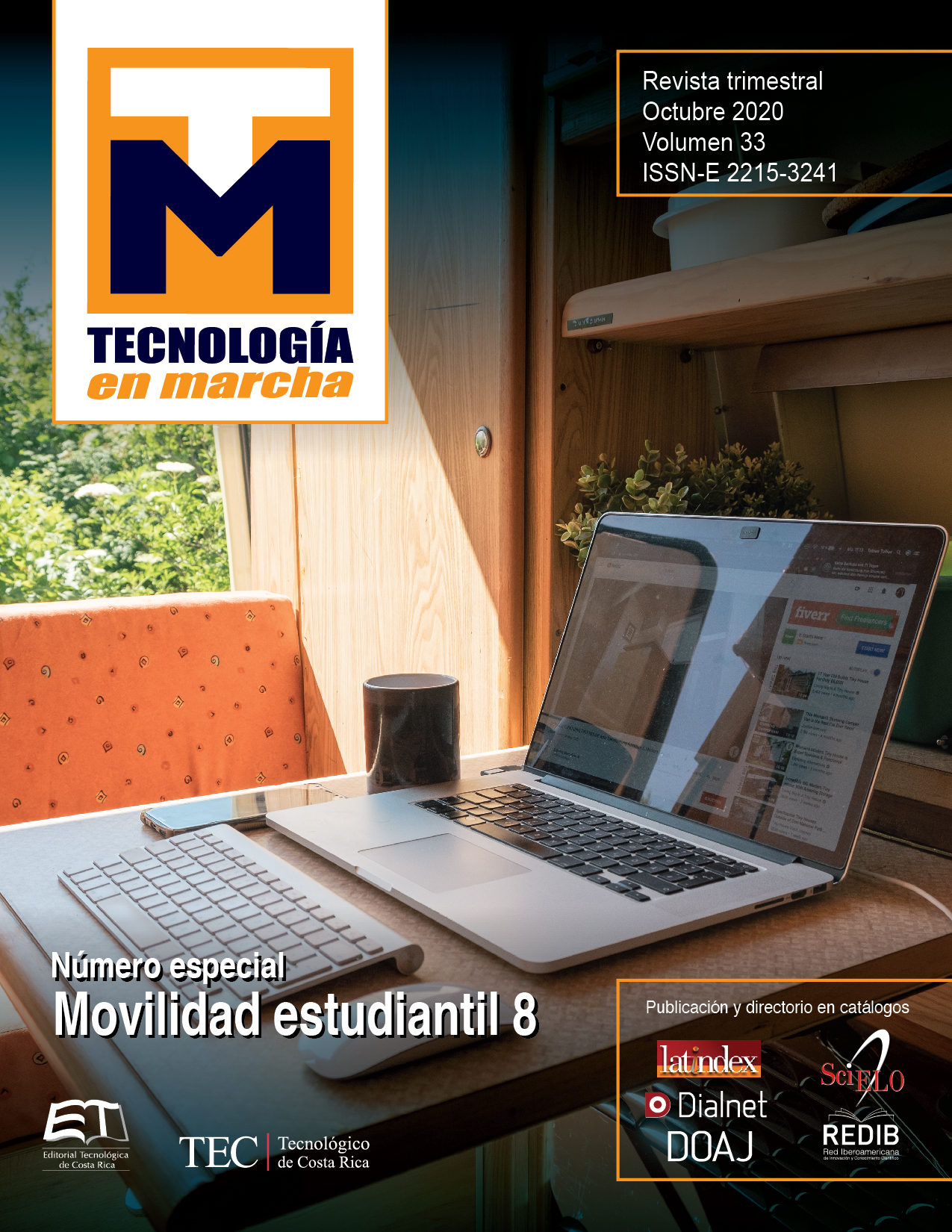Use of last generation electronic device for the experimental computation of the convection coefficient over a flat aluminum plate
Main Article Content
Abstract
This article deals with a jet of air at a lower temperature than the environment, which discharges
onto a flat aluminum plate located over a matrix of sensors that measures the temperature in the
area of impact. Subsequently, characteristic curves are found for each height and diameter ratio
of the jet (H/D), through data processing. The coefficient of convection is determined using the
relationship between the slope of the graph together with the result from the temporal evolution
of the temperature.
The main objective of the work is the verification of the functionality of the advanced electronic
device, which is carried out successfully. Also, and using visualization techniques the behavior
of the jet is analyzed. Both the electronic device and the use of air jets have great interest in
the industry (refrigeration, heating, drying processes, cleaning among others). In the case of
the advance electronic device it is possible to provide data regarding real-time temperature
measurement in areas of difficult access.
Article Details

This work is licensed under a Creative Commons Attribution-NonCommercial-NoDerivatives 4.0 International License.
Los autores conservan los derechos de autor y ceden a la revista el derecho de la primera publicación y pueda editarlo, reproducirlo, distribuirlo, exhibirlo y comunicarlo en el país y en el extranjero mediante medios impresos y electrónicos. Asimismo, asumen el compromiso sobre cualquier litigio o reclamación relacionada con derechos de propiedad intelectual, exonerando de responsabilidad a la Editorial Tecnológica de Costa Rica. Además, se establece que los autores pueden realizar otros acuerdos contractuales independientes y adicionales para la distribución no exclusiva de la versión del artículo publicado en esta revista (p. ej., incluirlo en un repositorio institucional o publicarlo en un libro) siempre que indiquen claramente que el trabajo se publicó por primera vez en esta revista.
References
P. G. Castillo, Estudio experimental del impacto sobre una superficie plana de un chorro frío, Málaga, España:
Universidad de Málaga, 2011.
J. M. Bergthorson, K. Sone, T. W. Mattner, P. E. Dimotakis, D. G. Goodwin y D. I. Meiron, Impinging laminar jets as moderate Reynolds numbres and separation distances, Pasadena, California 91125, USA: California Institute of Technology, 2005.
J.-J. Shu y G. Wilks, Heat Transfer in the Flow of a Cold, Axisymmetric Vertical Liquid Jet Against a Hot, Horizontal Plate, Singapore: School of Mechanical and Aerospace Engineering, 1996.
J. Baonga, H. Louahila-Gualous y M. Imbert, Experimental study of the hydrodynamic and a heat transfer of free liquid jet impinging a flat circular heated disk, Belfort, France: Femto ST, 2005.
J. A. Higalgo Lopez, J. Romero Sanchez, R. Fernandez Ramos, J. Mantín Canales y J. Ríos Gómez, A lowcost, high-accuracy temperature sensor array, Málaga, Spain: Departamento de Electrónica, Universidad de Málaga, 2018.
Liu, Chang, Cascioli, Heusch y McCarthy, Design and development of a thermal imaging system based on a temperature sensor array for temperature mesaurements of enclosed surfaces ans its use at the body-seat interface, California, USA: Measurement, 2017.
R. Bardera Mora, Aplicación del PIV a la medida del coeficiente de resistencia aerodinámica, Madrid, España: Facultad de Ciencias Físicas, 2005.
J. G. Marroquín, Determinación experimental de coeficientes de transferencia de calor para convección libre y forzada, Nuevo Leon: Nicolas de los Garza, 1998.
Y. A. Cengel, Transferencia de Calor, México DF: McGraw-Hill, 2004.
J. Coberan y R. Royo, «Mécanica de Fluidos,» Universidad Politécnica de Valéncia, 16 Junio 2006. [En línea]. Available:
http://www.upv.es/ul/U0296621.pdf. [Último acceso: 1 Junio 2018].

